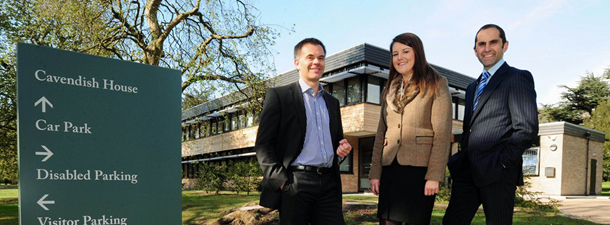Not every family has a country estate with a mansion dating back to the 12th century and 15,000 acres, but at Welbeck Abbey, huge thought and resources have gone into creating a sustainable estate fit for the 21st century.
William Parente, a former film producer, and his wife, Alison, have taken on the challenges of maintaining Welbeck Abbey, traditionally the home of the Dukes of Portland, on the death of Parente’s aunt, Lady Anne Cavendish-Bentinck. The philosophy for the future of the estate is built on four “pillars”.
Gradually, a new sustainable community is emerging, restoring many of the estate buildings put up by the fifth duke who, over 20 years, had a passion for construction. Until 2005, Welbeck Abbey was home to the Army’s Sixth Form College but they moved out allowing the Parente family to reoccupy the abbey.
The last Duke of Portland built a smaller home in the grounds – Welbeck Woodhouse – where Lady Anne lived until her death in 2008, aged 92. Sometime before, the family had established what it calls the Four Pillars, the guiding principles and philosophy for the future of Welbeck Abbey.
Unlike National Trust properties or the Duke of Devonshire at Chatsworth, Welbeck is not out to attract tourists to the house. It wants to bring people to the estate to share a philosophy and sense of purpose.
Rob Mayo, a Chartered Surveyor with a degree in the history of art, was recruited as development director to take some of the projects forward.
Rob commented:-
“I was given quite a lengthy brief which, in a nutshell, was to bring the Welbeck project into being. It is about creating a sustainable community based on the four pillars: creative business, the arts, rural diversification and education. It is about trying to find new uses for our buildings, but not just any old use, and particularly focused on creative business and education. Rural diversification gives a fair amount of flexibility – businesses related to food, food production, artisan foods.”
Today, it includes a school to learn how to make and bake traditional breads. There is a cheese-making school and, more recently, a brewery. A butchery course teaches how to butcher beef, pork and lamb and a new school could be set up soon to teach how to cure meat. While Mrs Parente is particularly interested in traditional artisan foods, her husband is passionate about the arts and creative businesses. He once wrote an arts column for the Scotsman.
Mr Mayo was involved in the £15 million restoration of Piece Hall, in Halifax, where he was project manager. His responsibility now is finding new uses for and converting historic buildings on the estate with up to 175,000 sq ft, one of the so-called Welbeck Pillars. They are made up of hen houses, courtyard buildings, ancillary building and lodges on the estate.
Carriage Court has become 9,200 sq ft of very comfortable serviced office space divided up into small units of 162 sq ft upwards to 2,200 sq ft. The high standard of work was carried out with flair by Susan Amaku, of Woodhall Planning and Conservation, in Leeds, architects and conservation specialists. Prices start at £12 a sq ft with service charges on top.
The Lower Motor Yard has been skillfully converted into the School of Artisan Food. Cavendish House was built as the science laboratories for the school in the 1960s. The restoration is again a high standard, attractive and with style. The fourth floor contains the offices for managing the Welbeck Estate and the ground floor contains five serviced offices totalling 2,200 sq ft available to let.
Nearby is a 800 kilowatt biomass boiler for heating Welbeck Abbey and part of the estate, thought to be the largest in private hands in the country. The £1 million installation burns 25 tonnes of wood chip a week, all coming from the estate. Welbeck Estate has taken a different route from other country houses, it is about attracting visitors a gem of an estate, to sense the history of generations of the Portland and Cavendish- Bentinck family.
The Parentes want people to share in a common vision coming to Welbeck; to learn to make artisan bread, become cheese-makers, attend courses on curing meats, butchering meat and making sausages. It is a very different kind of “tourism” which is about buying into and sharing an ethos.
“Visitors come to the estate with the settled purpose of doing something, to do a workshop, to have lunch or go to the farm shop.”
“One thing it is not is a rural business park. While business is an important part of what goes on here, it is only one aspect. The bigger picture is more than that, it is about being a sustainable community. We have our own food, water supply and sewerage system. Welbeck is quite self contained.”
Welbeck Abbey Brewery is managed by brewer Claire Monk, a microbiologist, in Lower Motor Yard. A joint venture between Welbeck Estates and Kelham Island Brewery, it is already supplying 70 pubs with cask and bottled beers such as Portland Black, Cavendish and Red Feather. The adjoining units will be converted for use by food producers in a renamed Brewery Yard. There are still several architecturally important listed buildings on the estate looking for a purpose.
A very posh hen house, a palace for chickens with its own grassed courtyard guarded by railings to keep our marauding foxes, awaits inspiration. One idea is that it could become a crèche, assuming there are enough young families nearby.
That may be some way away because the priority is creating commercial accommodation which will pay its way, about 20,000 sq feet has been created or restored so far, and there is no defined timescale for the restoration of the remaining accommodation, more than 150,000sq ft.
A Harley endowment supports the gallery and workshops, the gallery offers a glimpse of the very private world of Welbeck, its pictures and the tastes of the occupiers, who continue to buy art.
For Laura West, letting properties on a ducal estate is a break from the norm. Listed buildings that have a history are unusual in her book, but as a chartered surveyor, she has found the project totally absorbing.
Laura West of FHP Property Consultants commented:-
“I just love the whole estate, it is a magical location allows time for reflection. I think businesses are attracted to the location, the address and the prospect of buying into the estate’s Four Pillar philosophy. You are buying into the address, the lifestyle and the facilities that come with it such as the Welbeck Sailing Club.
Facilities include potential membership of the sailing club. Members sail their dinghies on the Great Lake. The investment in converting Carriage Court into offices is huge and to the highest sympathetic standard. When I take people round, they are bowled over by the design and quality.”
“Although remote, it is only 15 minutes or so from the M1 and less from the A57. High-speed internet connections have been introduced to the estate which is particularly attractive to creative businesses.”
When the distinguished architectural historian, Nicholas Pevsner, wrote his Buildings of England book on Notts in 1951, he gave little hope for the future of Welbeck Abbey in private hands. The Duke had built a modern house for himself in the grounds, Welbeck Woodhouse.
Sir Nicholas wrote:-
“The building history of Welbeck Abbey in a mood sadly characteristic of the C20.”
The current Duke, he wrote, had moved to a house “no larger than a wealthy suburban villa near am industrial town”. And he posed the question of what would happen to Welbeck when the army school left.
“Will a public use be found: Electricity Board Coal Board, Lunatic Asylum, Convent, School. Sanitorium, Museum. The question is one of importance far beyond the individual case of Welbeck.”
The revision of the book by Elizabeth Williamson in 1979 omitted the last paragragh. Pevsner, were he alive today, would undoubtedly be excited by the current Welbeck philosophy.



















